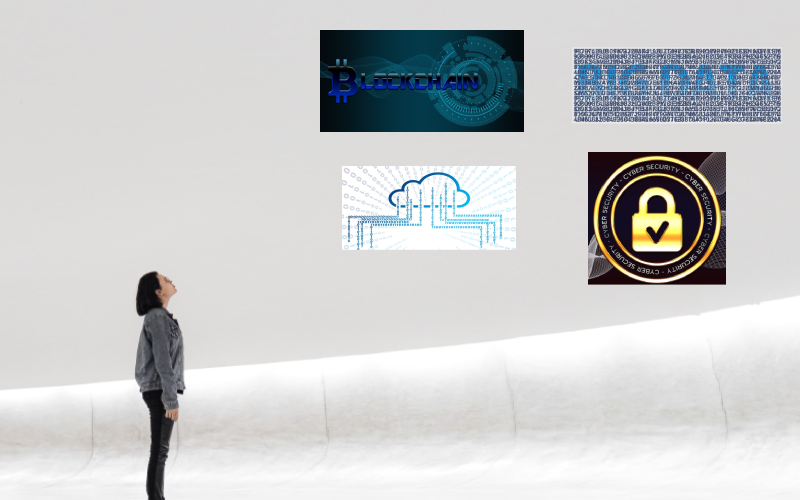Future Trends in Software Development in 2023
The year 2023 has arrived, and it is certain that new technologies will emerge while others continue to advance. This year will continue the software development trends that were established in 2022, which was one of the best years for technology, but there will be many more discoveries.
In today's age of connected information, client expectations are a constantly shifting reality. And while customized digital solutions have been the key to overcoming the avalanche of client expectations for some time, digital clients of today want more from software partnerships.
This blog aimed to examine worldwide software industry trends and analyze their practical implications. We have taken into account technologies, tech stacks, and industry leaders in preparing an in-depth analysis. Now, let's analyze each trend and its possible future uses.

Top Trends in Software Development in 2023
1. Adoption of Low Code/No Code Development
Low-code development is forecasted to be one of the leading trends in software development in 2023. Forbes states that organisations cannot spend years attempting to optimize their IT departments in order to compete. Currently, anyone with a basic understanding of programming can attempt to design their own apps, and this potential is hugely useful for SMBs.
While low-code/no-code solutions are rising in popularity rapidly due to their quickness and the ability for any organisation to enter the market fast, they are not easily scalable or adaptable if market trends change and businesses must adjust. Consequently, demand for custom software development services will continue to be the most wanted alternative.
2. Cybersecurity is in high demand
A few years ago, when the technology became more generally available, technology professionals began to recognise the true challenges, and cybersecurity became a more mainstream field. In recent years, the primary advantages of software development have been evident, and cybersecurity will be one of the most prosperous areas. As technology has more prevalent, the threat has increased. As cloud computing, data centres, and the Internet become more accessible, businesses play an increasingly essential role in cybersecurity.
To protect their infrastructure, businesses must prioritise cybersecurity in the design and operation of their data centres. As our technology dependence continues to grow, the requirement for cyber security will continue to increase. Utilizing biometrics, businesses may determine how secure their equipment is against external threats. Companies should invest in cyber security early on because it is more cheaper to prevent damage than to repair it after it has occurred. Additionally, they should implement antivirus and firewall software, encrypt important information, and monitor network traffic.
3. Edge computing
Cloud computing is no longer an option when software demands real-time data processing under situations of low bandwidth quality. Without an Internet connection, the application cannot communicate with remote data centres.
Edge computing facilitates the resolution of this issue by relocating data to the edge of the local network, allowing users to utilise the software both online and offline. In areas where a blackout could result in large losses (transportation, healthcare), edge computing will predominate.
From 2018 to 2025, edge computing is projected to increase by a multiplier of 28 times. Some of this has already occurred, but the future holds many more chances for edge networks.
4. Blockchain Technology
Blockchain technology is still in its infancy, but businesses have begun to investigate its potential for streamlining processes. Using blockchain technology, businesses can take advantage of a variety of opportunities.
Blockchain technology can be used to protect data from manipulation and unwanted access. This might be especially beneficial for businesses that manage sensitive data.
Providing a tamper-proof record of transactions, blockchain technology can aid in reducing fraud by assisting in the prevention of fraud. This can assist enterprises limit their losses due to fraud.
Blockchain technology is capable of automating corporate operations, hence minimising the need for human participation. This can assist businesses decrease costs and speed up operations.
5. Big Data
In the current global market landscape, data is the driving force behind any organisation. As more businesses automate their business processes using data-driven models, the data analytics industry continues to flourish.
According to a report by Research and Markets, the global Big Data & Analytics market was valued at USD 82.99 billion in 2021, USD 91.11 billion in 2022, and is expected to reach USD 146.71 billion by 2027, expanding at a CAGR of 9.96%.
These figures speak louder than words. Nonetheless, the combination of big data with AI, ML, and other cutting-edge technologies will propel enterprises toward what we refer to as the fourth industrial revolution.
Unquestionably,big data analytics is one of the most potent technological revolutions that will play a crucial role in transforming several corporate processes and operations worldwide.
6. Mixed Reality
Mixed reality is the combination of the actual and virtual worlds, such as AR (augmented reality) and VR (virtual reality). It creates an immersive experience with physical or digital interactive items. You can create native apps for restaurants, real estate, and other companies using mixed reality.
Using mixed reality interfaces, your personnel can navigate even the most intricate procedures. Examples of mixed reality include the HoloLens, virtual furniture fitting, 3D modelling, Snapchat filters, and virtual makeup.
The ability for prospective customers to test out a product or service prior to purchase is one of the most essential AR/VR applications for businesses. To offer a flawless experience, data processing must occur close to the VR device. AR/VR devices can be utilised for reasons other client interactions. In addition, they allow coworkers to participate in real-time job sharing, remote collaboration, and sophisticated training, which all require the speed of edge processing to function effectively.
7. Microservices Architecture
Since May 2011, when the word "Microservice" was coined for the first time, this architectural pattern has established itself as a dominant one in the software development industry.
Previously, software engineers were required to build digital solutions with a monolithic design. It indicates that a complete application had to be developed with a solid code that cannot be separated without compromising its functioning. In contrast, when adopting a Microservices architecture, software developers assemble modules with a single purpose into an independent digital solution. As a result, the microservices design enables software engineers to create scalable and maintainable solutions that are highly functional and flexible.
Microservice architecture is widely utilised for the development of a variety of digital solutions, including mobile app development, desktop and online application development, and cross-platform app development. The trend will continue to dominate various types of software development in 2023.
8. Infrastructure as Code (IaC)
Infrastructure as Code (IaC) can significantly ease software development and maintenance by controlling and delivering IT infrastructure via configuration files or code, as distinct to manually. This is made possible by cloud computing technologies that enable DevOps engineers to swiftly and automatically configure their infrastructure needs.
Due to the elimination of the need to assign a large number of specialists to infrastructure management, the elimination of the need for multiple people to deploy configurations manually, and the on-cloud implementation that ensures the scalability and availability of the infrastructure, software development companies can effectively reduce their development costs with IaC.
9. Cloud computing
In 2022, not only startups and businesses, but also government entities and institutions adopted Cloud computing. The importance of the technology is recognised by hospitals, security agencies, legal authorities, and the Pentagon. It is feasible that by the end of 2024, organisations and institutions across the globe, not only in the United States, will have migrated significantly to the Cloud.
The Cloud is one of the most prominent software industry trends since the shift to this kind of computing has never been simpler. At current time, all worldwide corporations are investing in the technology (with Google, Amazon, and Microsoft as the frontrunners), and they provide Cloud computing for businesses and individuals. You can even receive free credits for the first month to see whether or not the Cloud infrastructure meets your requirements.
10. AI development
Artificial intelligence has topped technological trend lists for several years in a row, and this is unlikely to change in 2023. Last year, both large enterprises and smaller startups continued to invest in artificial intelligence. Each year, people become more habituated to employing AI in everyday routines, and it does not spark many ethical concerns.
AI can help make sense of it all, whether it’s analyzing the most recent data or advising on how to proceed with a problem. Furthermore, advances in machine learning will continue to improve computers’ and robots’ ability to perform tasks without being explicitly programmed. With these advancements, businesses will be able to quickly automate tasks, eliminating the need for costly human labor. Overall, AI has the potential to change how businesses operate due to its potential across industries and applications.
Conclusion: Implementing trends in software application 2023
The 2023 year brings various software development trends. Nevertheless, companies that strive to adopt new technologies in their digital solutions have to carefully consider each software development innovation and adopt only those that will surely help them stay competitive in the market and provide the best customer experience to their users.
If you’re planning to upgrade the existing software or considering building a new one from scratch, Vconnex ready to help you and provide you with the best custom software development experts who have enormous experience in working with new technologies and innovations.
Related Blogs:
Applying AI for Enhanced Patient Data Matching

